How to treat gooseberries from powdery mildew in spring and summer?
Spheroteka, or in a simple way - powdery mildew, appears in all its glory on gooseberry bushes in June. White bloom, similar to moss, covers berries, leaves, shoots, mostly young. The disease can not only deprive the summer resident of the harvest, but also completely destroy the bushes. How to treat gooseberries from powdery mildew in the spring, which means give a greater effect - these questions concern gardeners, experienced and beginners.
What “chemistry” should be used to spray gooseberries?
An excellent wintering fungus in the root zone - the causative agent of powdery mildew - wakes up in the spring and rapidly sheds spores, infecting neighboring plants and soil. Although the disease enters full "color" at the beginning of summer, all preventive measures are carried out in the spring, as soon as the snow melts.
If powdery mildew was noticed on the site last season, in the first days of spring, measures are taken to curb the spread of spheroteka, and preventive treatment of gooseberries is carried out. Experienced gardeners may notice signs of damage even before bud break.
In the fight against fungus, the following drugs are popular among summer residents.
- "Nitrofen". Spraying is carried out strictly before the buds open. For processing, 200 g of the drug is diluted in 10 liters of water.
- "Topaz" - the spray solution is prepared by diluting the contents of 1 ampoule of the product with 10 liters of water. Plants are treated 2-3 times before flowering with an interval of 2 weeks. The drug is moderately toxic to humans and pets. It is not used near water bodies.
- "Tilt KE" - suitable for the prevention and treatment of already diseased bushes. It has the ability to penetrate the cells of the surface tissues of plants, which increases its duration. The emulsion for spraying is prepared at the rate of 0.4 ml of the product per liter of water. The result is obvious within a couple of hours after application. The drug is not used if there is an apiary or fish ponds nearby.
Also for treatment and prevention use "Emistar Extra", "Vitaros", "Skor".
You can process the gooseberries before the buds bloom, using proven means:
- copper sulfate - 80 g / 10 l of water;
- iron sulfate - 30 g / 10 l of water;
- ammonium nitrate - 50 g / 10 l;
- potassium permanganate - 1.5 g / 10 l of water.
Simultaneously with the treatment of the bush, the products are sprayed on the ground.
At the stage of bud formation, it is effective to use copper oxychloride, dissolving 30 g of the drug in 10 liters of water.
Colloidal sulfur is not used for the prevention or treatment of powdery mildew on gooseberry bushes, since it causes loss of leaves in the plant.
Chemicals of the same name are not used for more than 2 years in a row, since mycelium can adapt to adverse conditions.
Biofungicides
Spraying gooseberry bushes with biofungicides is carried out when the daytime temperatures are above 15 ° C. They can be used at all stages of the growing season. Effectively work against powdery mildew "Planriz", "Fitosporin-M", "Pseudobacterin-2", "Trichodermin".
An excess of nitrogen in top dressing increases the sensitivity of the gooseberry to the causative agent of the disease.
Folk remedies against spherotek
The use of folk remedies in the prevention of disease is no less effective than the use of chemical or biological drugs. But the old recipes that came out of the people are completely safe for people, birds, pollinating insects and other inhabitants of the garden.
The peculiarity of using folk remedies on gooseberries is that the bushes are not sprayed, but each shoot is abundantly moistened.
- Watering with boiling water
The procedure is carried out as soon as the snow melts. All garbage is preliminarily removed from under the bushes. Exposure to temperatures above 60 ° C is detrimental to spheroteca spores, very often such a simple procedure is enough to completely get rid of the causative agent of the disease.
- Wood ash
Ash is a good remedy against a number of gooseberry pests (moths, aphids, sawfly, snails, slugs). At the same time, it serves as a supplier of calcium, potassium, phosphorus, and lowers the acidity of the soil.
For spring processing, take dry ash, sift it. Dusting the bushes is carried out at the rate of 15-20 g for each bush. At the same time, ash is poured into the soil under the root (300 g / m2) when digging, spill with water, pour dry earth on top.
In the spring, four to five more treatments of gooseberries with ash, but already in liquid form, are carried out. The infusion, prepared at the rate of 300 g of ash per liter of water, is kept for 5 days, then the bush is abundantly sprayed.
- Soda ash
Before flowering and immediately after flowering, gooseberry bushes are treated with a soda solution. First, 50 g of the product are diluted in boiling water, then water is added to a volume of 10 liters, 1 tbsp. l. liquid detergent.
- Soda with aspirin
Prepare a solution for spraying from 1 tbsp. l. soda, 1 aspirin tablet, 1 tsp. liquid soap, 1 tbsp. l. any vegetable oil, 4.5 liters of warm water. Gooseberry processing begins from the moment the buds open, repeat every 2 weeks.
Brilliant green, common for a home first-aid kit, also helps to get rid of the fungus. 2 drops of antiseptic are added to a bucket of water, gooseberries are sprayed.
- Mullein
The solution for processing is prepared as follows: 1 part of the rotted manure is diluted with 3 parts of water, infused for 3 days, filtered, 3 parts of water are added to 1 part of the infusion. The product is suitable for treating plants before and immediately after flowering. Rotted hay or straw is used similarly.
- Whey, kefir or sour milk
A liter of dairy product is diluted with 9 liters of water. Spraying is carried out three times during the week on young leaves. To increase the efficiency of the solution, 10-15 drops of iodine are added to it.
- Onion peel
200 g of raw materials are boiled for 10 minutes in 10 liters of water, allowed to brew for 2 days, filtered, the husk is squeezed into an infusion. Processing is carried out before and after flowering.
- Tansy
Dry leaves and flowers (300 g) are poured with cold water (10 l), insisted for 2 days. Simmer for 3 hours over low heat, filter. The resulting solution is sprayed on the ground under the bushes after the spring digging.
- Field horsetail
100 g of dry herbs are soaked in 10 liters of water, after a day of infusion, they are boiled over low heat for an hour. The cooled broth is diluted with water 1: 5. Horsetail is used to treat gooseberries from early spring to the end of leaf fall.
Spraying the gooseberry with fertilizers immediately after the end of flowering performs two functions at the same time: it feeds the bush on the leaf and prevents infection with powdery mildew. The solution is prepared from 20 g of superphosphate, 50 g of potassium chloride, 30 g of urea, 5 g of potassium permanganate, 10 l of water.
How to properly treat powdery mildew from gooseberries?
The first treatment of gooseberry bushes is carried out strictly before the buds open. For this, a chemical fungicide or folk remedy is selected, including sprinkling with hot water. The term of the second treatment is the beginning of flowering, optimal use of biological products or products prepared according to folk recipes. The third spraying is after the end of flowering. Use biofungicides or alternative methods.
Shrubs are processed in the following order:
- For the procedure, a dry, cloudy, windless day or early evening hours of a sunny day is chosen.
- Thoroughly spray the crown, making sure that the agent is sprayed on both sides of each leaf - the top and bottom.
- The sides and base of the bush are treated in a similar way.
- Water the soil under and around the gooseberry with a medicinal solution.
It is advisable to simultaneously carry out the processing of plants and soil in nearby beds.
Agrotechnical techniques
It is difficult to achieve a sustainable positive result by treating shrubs alone. It is also important to follow the simplest agrotechnical rules:
- thinning the shrub, timely cutting out of old branches that give few berries;
- maintaining cleanliness under the bushes, regularly removing debris;
- rejection of nitrogen fertilizers.
Some gardeners successfully use dry residues of garden and garden plants to combat the pathogen of powdery mildew. The trunk circle is closed with tops, poured with a solution of the EM drug. Beneficial microorganisms happily feed on the spheroteca spores and mycelium.
A positive result in curbing the spread of spheroteka spores is given by sowing under the bushes of doctor plants - garlic, marigolds (tagetes), dill, parsley, mint... The first two also protect plants from pests, blooming marigolds and herbs attract beneficial insects.
Protecting gooseberries from powdery mildew is a constant process, the lightest spores are regularly carried by the wind. Spring treatment of bushes protects berry bushes from pathogens introduced in autumn. In order to fully protect the garden from the spheroteka, you need to constantly monitor the condition of the bushes, prevent them from shading, thickening, spray them with an optimally selected composition in due time, cut out shoots with signs of damage with a firm hand. Compliance with the entire set of measures will preserve the harvest of gooseberries and the health of all plants on the site.



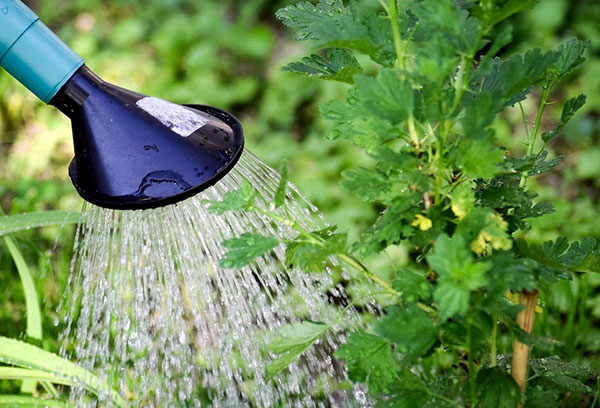

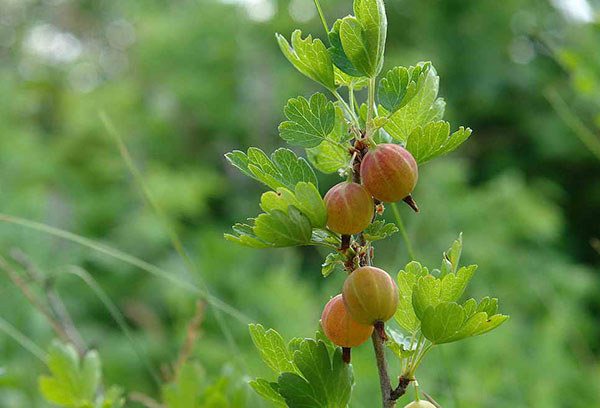
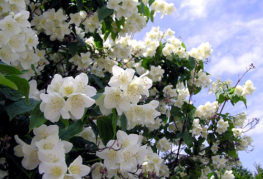
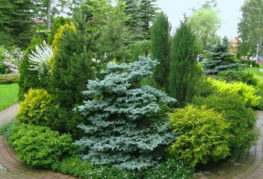

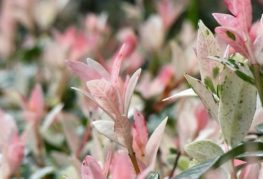
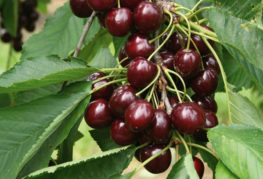
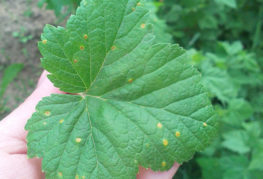
and will be published shortly.